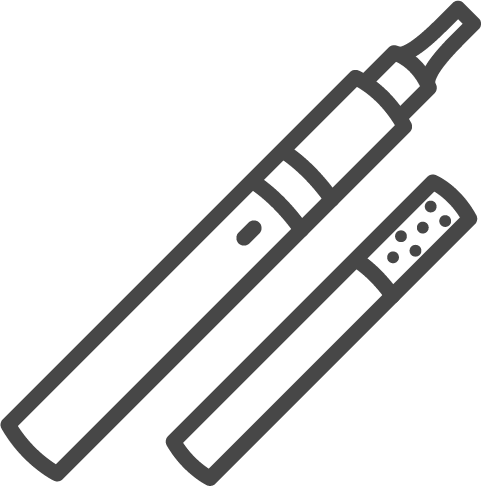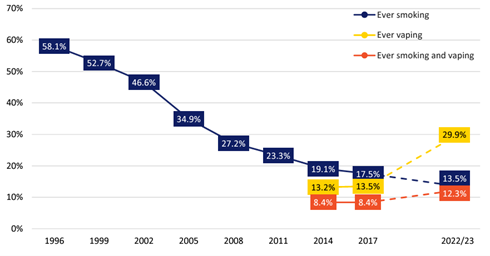
In 2022/2023, almost one third (30%) of students said they had ever vaped. This is a significant increase from 2017, when 14% of students reported ever vaping. It’s important to note that only a small proportion of these students were using e-cigarettes/vapes regularly, with only 5% of students vaping on 20 or more days in the past month and 3% vaping every day.
Significantly more female students had ever vaped compared to males (35% compared to 25%). Students aged 16-17 were also more likely to have ever vaped than younger students aged 12-15 (43% compared to 24%).
Most (69%) students who had ever vaped had never smoked a tobacco cigarette before their first vape. However, 20% of these students went on to try a tobacco cigarette after they had vaped.
Smoking among Australian secondary school students has been declining for over 20 years, and smoking rates were at their lowest in the 2022/2023 results. While in 1996 58% of students had ever smoked, in 2022/2023 this had decreased to 14%.
The ASSAD survey also measures students’ susceptibility to smoking by asking them whether they intend to smoke in the next year. Studies have shown that this measure is a good predictor of future smoking. Concerningly, susceptibility to smoking has increased in recent years. In 2022/2023, 15% of students who had never smoked were susceptible to smoking – up from 11% in 2017. This highlights the importance of ongoing prevention programs.

Lifetime ever smoking and lifetime ever vaping among Australian secondary school students, 1996-2022/2023. Source: Scully, M., Koh, I., Bain, E., Wakefield, M. & Durkin, S. (2023). ASSAD 2022-2023: Australian secondary school students’ use of alcohol and other substances. Cancer Council Victoria.